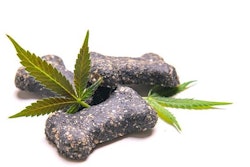
I’ve heard mixed reactions about Global Pet Expo 2024; many people had a great show, including some pet food exhibitors saying their booths were packed with steady traffic, while others speculated that overall attendance seemed down, at least slightly.
This tension may also reflect the state of pet food now: Data points to some slowing of sales growth as well as pet ownership (mouths to feed), especially relative to pandemic surges, yet many of the people I talked with sounded very upbeat and said they expect innovation in pet food to really pick up in the next few years.
As for me, I left Orlando buoyed by all the insightful conversations, meetups with longtime industry acquaintances and new connections I experienced. Following are a few highlights.
Pet food trends I was tracking
Before Global, I speculated about the trends I might see. So, to address those first:
New air-dried and freeze-dried pet foods and treats continue to launch on the market, accompanied by even more niche and novel processing formats. (More on those below.)
Cats and their owners should definitely be feeling the love from pet food and treat brands developing ever more new products for them; my colleagues and I all saw plenty. A favorite: catnip-infused cat treats, especially a brand called Crack-Nip!
Additives like catnip may be supplanting CBD, at least for cats; we all saw decidedly fewer new CBD treats and supplements than in past years. Actually, except for supplement brands based completely on CBD, it didn’t seem prevalent among product ranges in general. And even companies whose business models revolved around CBD seem to be branching out — for example, Pet Releaf launched its first non-hemp line of pet supplements.
Sustainability was definitely a force at Global, mirroring its increasing role and status in the pet food and pet care industries overall. Besides the booths for the Pet Sustainability Coalition and some of its members, many exhibitors in the Natural Pet section, and indeed throughout the show floor, touted sustainability claims, products and initiatives. An informative session by Suzy Badaracco, president of Culinary Tides, provided an in-depth look at consumer drivers and behaviors related to sustainability.
(Note: Badaracco will be presenting on consumers and their perceptions toward pet treats and snacks during Petfood Essentials 2024 on April 29.)
5 key takeaways from sessions, conversations
1. Growth is slower, but with bright spots. As I mentioned above, several sessions presenting data on pet food sales and pet ownership showed lower growth — yet the industry is still growing, and in fact outpacing the growth of other fast moving consumer goods categories like human foods, baby care, alcohol and beauty, according to analysts from both NielsenIQ and the American Pet Products Association, organizer of Global Pet Expo.
Further, while innovation as measured by new product launches essentially stalled during the pandemic (not just for pet food/pet care), NielsenIQ reported a slight uptick in pet care launches in January 2024, after two years of declines. Whether that was an outlier or the beginning of a new growth curve remains to be seen.
2. Innovation and new product launches are rebounding. The NielsenIQ data was corroborated by the number of new products on display at the show, as well as conversations with pet food industry representatives. For example, Dave McLain, CEO of co-/private label manufacturer Alphia, said new product launches had ground to a halt during 2022 and 2023; in the last quarter of 2022, his company had zero new product development projects. Yet now, as the first quarter of 2024 is wrapping up, Alphia has 100 projects in the pipeline.
3. Private label pet food continues to rise. McLain and other private label manufacturers I spoke with also reported their businesses are robust, echoing data from NielsenIQ showing steady growth in private label pet food sales. This also represents a rebound; after these companies could barely keep up with business during pandemic stocking-up, their sales dropped dramatically in late 2022 and beyond as pet food supplies (for both consumers and retailers) seemed to level out. But now sales for most are back. One person told me (off the record) that his company is working with most major retailers and often on more than one product line.
4. Supply chains have steadied, though inflation is still a force. One reason innovation is coming back is due to the stabilization of supply chains, which multiple people, including McLain, said were no longer an issue, at least nowhere close to the level of significant disruptions during the pandemic. However, that doesn’t mean manufacturers’ costs have steadied — and since producer prices directly affect retail pet food prices, inflation is still a problem for everyone, from suppliers and manufacturers to retailers and consumers.
5. New processing formats contribute to innovation. In addition to the many new air-dried and freeze-dried products on display at Global, several companies debuted completely new formats, including a “steamed and dried” line from Ziwi Peak (a “micro-steam process” provides a “unique” texture, followed by air drying) and a cold-pressed line from Nulo Pet Food (using a cold-temperature forming process, similar to that for jerky, followed by drying at 150 degrees F). The latter format is not entirely new to pet food — I’ve seen examples in Europe during past Interzoo shows — but it is new to the U.S. market.
Any type of innovation is healthy for the industry, contributing to its dynamism; one thing to watch is how these formats are marketed and labeled going forward. I had interesting conversations with pet food professionals during Global as to whether all such formats (including air dried, freeze dried, “gently cooked” and the like) are truly “minimally processed,” as they’re often called. Are they actually less processed than more traditional formats such as kibble and canned, or are they just differently processed?
Offering pet owners choices is a great thing, as long as all choices are accurately and transparently labeled and described.

















